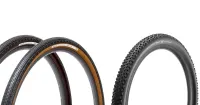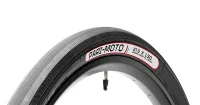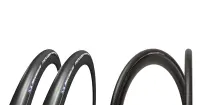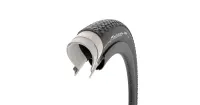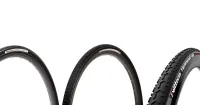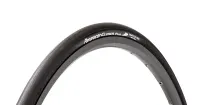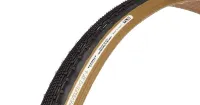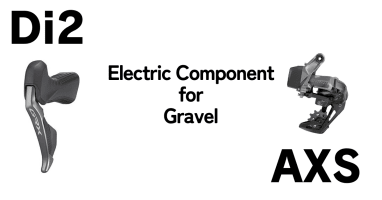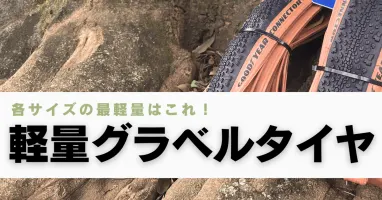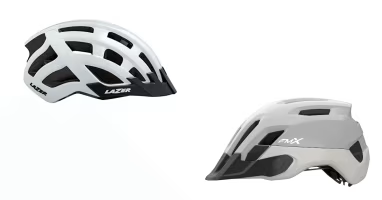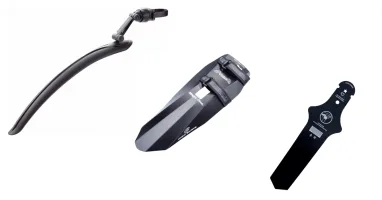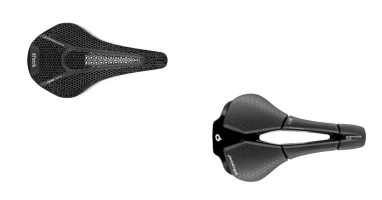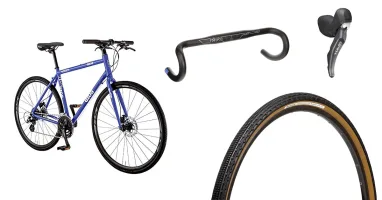Language Menu
- 日本語
- English
Advantages of MTB tires on gravel bikes and how to choose them
Gravel tires are getting fatter every year, but MTB tires are still the best choice for serious dirt road riding. The following is a summary of the advantages of installing MTB tires on gravel bikes and how to choose the right ones.
Modified at: 2023.7.4Posted at: 2023.5.10
Table Of Contents
- The Difference Between Gravel and MTB Tires
- Differences in tire thickness
- Differences in Tire Weight
- Differences in Knob Layout and Size
- Advantages of MTB tires on gravel road bikes
- Increased riding performance.
- More range when playing in MTB parks, etc.
- How to choose MTB tires for gravel road bikes
- Clearance is paramount
- Lightweight tires for XC (cross country) are recommended
- If you want to use larger tires, choose 650B (27.5-inch) wheels.
- MTB tires require tubeless tires!
The Difference Between Gravel and MTB Tires
At a quick glance, gravel tires and MTB tires look similar, but they are actually quite different.
The difference between gravel tires and MTB tires comes from “the difference in the road surface.” While gravel tires are designed to be used on “unpaved roads,” such as gravel roads, MTB tires can be used on a wide range of surfaces, from “mud and puddles” to “cliffs in mountains,” depending on the type.
These differences greatly affect the characteristics of the following tires.
- tire thickness
- tire weight
- knob layout and size
Differences in tire thickness
MTB tires are usually 60 mm wide, which is unthinkable on road bikes, and semi-fat MTB tires can be as large as 3 inches.
Because they are thicker, sturdier, and have knobs, tires weighing close to 1 kg each are also common. On the other hand, gravel tires are also getting fatter every year, but the maximum is about 60C.
Differences in Tire Weight
Tire weight is another point that differs considerably.
MTB tires are often thought of as heavier because of the knobs on them, but MTB tires are actually thicker to prevent tires from being cut by tree roots and rocks on the road surface.
These differences make MTB tires heavier than road tires.
Differences in Knob Layout and Size
Both gravel and MTB tires feature knobs that are not found on road tires. However, gravel tires, which are designed to be used on paved roads, generally have smaller knobs and are laid out in a way that they are spread over the entire tire.
MTB tires, on the other hand, generally have larger knobs that are laid out wider to prevent slipping in mud or gravel. As a result, MTB tires have higher rolling resistance on paved roads.
Therefore, gravel tires are easier to ride if a large percentage of your riding is on paved roads.
Advantages of MTB tires on gravel road bikes
Increased riding performance.
Although gravel road bikes are attractive for their high riding performance, they are still inferior to MTBs, which can handle full-scale mountain roads.
MTBs are designed for riding on mountain roads with suspension and other parts as well as tires, so it is only natural that gravel road bikes can be fitted with MTB tires to make them more similar to MTBs in terms of surface catching ability.
More range when playing in MTB parks, etc.
If a gravel road bike is allowed to ride in an MTB park, it is possible to play on a gravel road bike, but it is not possible to ride like an MTB.
This limits the courses you can ride on, but with MTB tires, you have a wider range of courses to choose from.
How to choose MTB tires for gravel road bikes
Clearance is paramount
When installing MTB tires on a gravel road bike, the most important weight is the frame/fork clearance.
Gravel road bikes often have wider clearance on the assumption that larger tires will be installed, but even so, they do not provide as much clearance as MTBs, so make sure you know how much size you can fit.
Since MTB tires are often marked in inches, keep in mind the conversion formula “1 inch = 25.4 mm” when choosing a tire.
For example, for a frame with 700 x 50C tire clearance, “50mm / 25.4 = 1.96 (inches),” meaning that up to a 1.9-inch size can be installed.
One point to note is that "clearance should be generous. When actually driving on unpaved roads, mud, debris, and other debris can stick to the tires and make them thicker, so if some room is not provided, they will rub against the frame while driving.
Lightweight tires for XC (cross country) are recommended
MTB tires are available in two types: tires that can be used in tough road conditions such as trails and enduro, and XC (cross country) tires, which are similar to gravel tires, are recommended for gravel road bikes.
XC tires can be as light as 600g per tire, which is a little heavier than gravel tires, and provide high riding performance.
If you want to use larger tires, choose 650B (27.5-inch) wheels.
The 650B wheels are increasingly being used on gravel road bikes as well, as road riders are looking for larger tires. 650B wheels are 40 mm smaller in diameter, so theoretically a 2 cm larger tire can be installed on the same frame.
However, tire clearance is not only important in the upward direction, but also in the width, so some frames may not be able to accommodate a larger tire even with 650B wheels.
If the frame clearance width is large, then a larger tire, such as 2.35", can be mounted on a gravel road bike by using a 650B wheel.
MTB tires require tubeless tires!
A thicker MTB tire requires a thicker tire tube. This means that the weight of the tube itself will also increase.
While most road tire tubes weigh around 100g, the standard MTB tire tube weighs around 300g. This means that the weight of the front and rear tubes will increase by as much as 600g.
Heavier wheels mean a heavier ride, so if you want to keep your gravel road bike running light, tubeless is a must.
With tubeless, the weight increase can be reduced because it only requires about 150 ml of sealant.
Let's master gravel tires!
Gravel tires are a characteristic of gravel bikes. One of the interesting aspects of gravel bikes is that depending on what tires are set and at what air pressure, the ride and comfort can vary greatly.
Current Article
Advantages of MTB tires on gravel bikes and how to choose them
Gravel tires are getting fatter every year, but MTB tires are still the best choice for serious dirt road riding. The following is a summary of the advantages of installing MTB tires on gravel bikes and how to choose the right ones.
Choosing Gravel Tires for Road Bikes
Even if your road bike is mainly used for riding on paved roads, you can enjoy gravel riding by installing gravel tires. In this issue, we have compiled a list of gravel tire selection and precautions for road bikes.
How to choose gravel tires for those who just want to go fast
Gravel bikes are said to be slower than road bikes. If you want to go faster on a gravel bike! If you want to go faster on a gravel road bike, you can make it lighter and faster by simply customizing the tires.
The Perfect Guide to Choosing Gravel Tires
One of the most fun and most affordable customizations for gravel bikes is changing tires. However, gravel bikes, by their very nature, are also the most difficult to choose tires for. In this article, we will thoroughly explain how best to choose tires for gravel bikes.
ETRTO standards for 650B tires and their inch counterparts
Many gravel bike riders love 650B tires. However, when looking for a 650B tire, the various size designations can be confusing. In this article, we will look at the different size designations for 650B tires and check each designation with its corresponding chart.
Is tubeless the best? Which type of gravel tire is best?
Tire selection is one of the most enjoyable and difficult aspects of gravel bike customization. In this article, we will look at the differences between tire types and the types of tires to choose for your gravel bike, along with their advantages and disadvantages.
What is a gravel tire? Definition of Gravel Tire
Gravel tires are rapidly gaining popularity in the road bike community. What is a gravel tire and how is it defined?
Which type is best? Get to know the different types of gravel tires.
Gravel tires are in between the properties of road tires and MTB tires, and there is a lineup of tires with both properties. In this issue, we will introduce the different types of gravel tires and how to choose and customize them for different uses.
Advantages and disadvantages of slick tires on gravel bikes
Slick tires are the standard for road bikes on paved roads. We have summarized the advantages and disadvantages of daring to install slick tires on gravel bikes, which are often equipped with knobbed gravel tires.
Why so many gravel bike users love tubeless tires? Advantages and disadvantages
One of the most popular customizations for gravel bikes is to convert the tires to tubeless. The following is a summary of the advantages and disadvantages of tubeless and why it is a favorite on gravel bikes.

